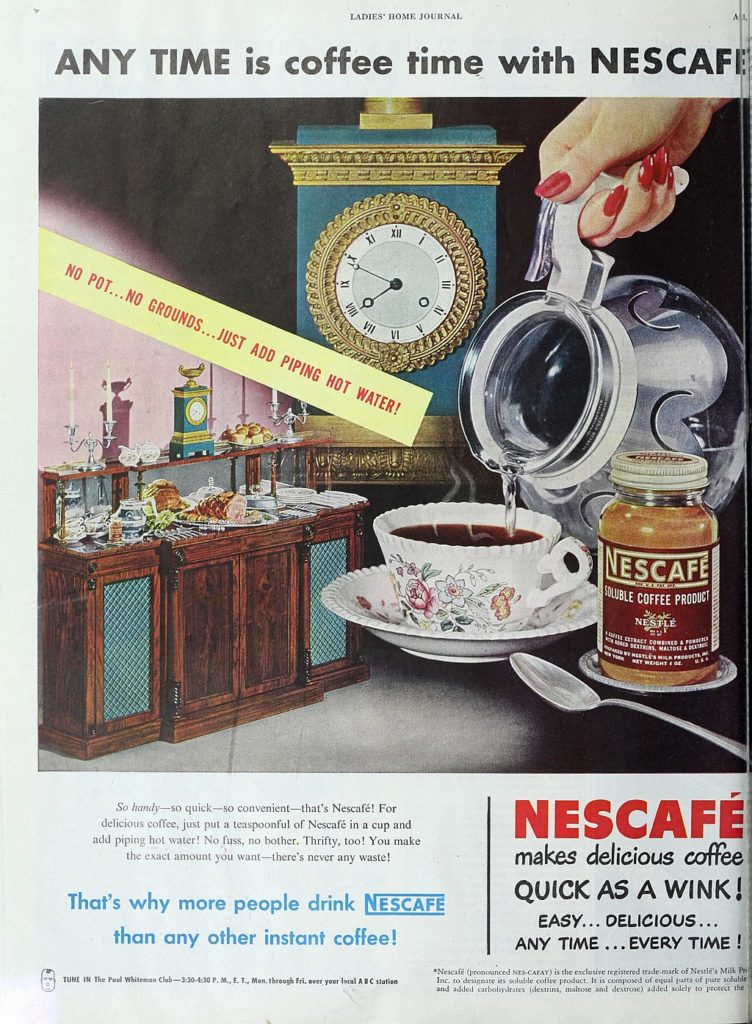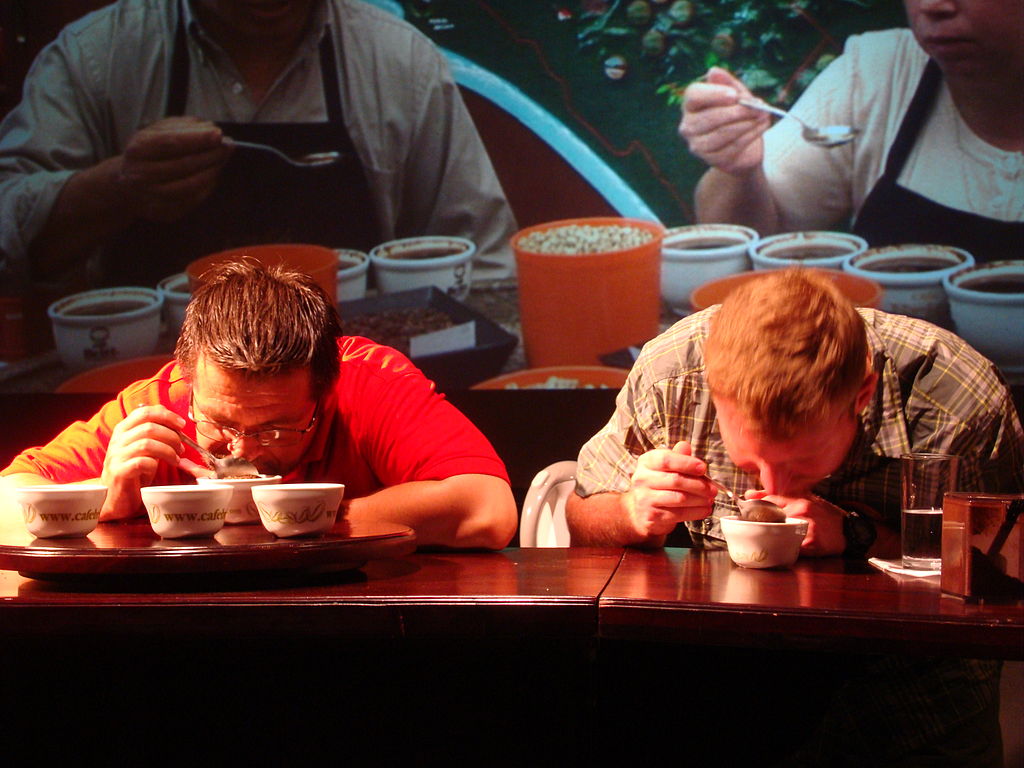“Catch a wave and you’ll be sitting on top of the world.” So sang the Beach Boys back in 1963. Of course, they were singing about surfing. Today, however, when coffee lovers talk about waves, chances are they are talking about coffee.
By the time I heard about “coffee waves”, we were already on the third one. What happened to the first two? What are these waves? How many are there? How do they come about? Who decides what the next wave will be or when? These are the questions that will be tackled in this post.
Making Waves
Coffee is so much more than your “go-juice” in the morning or pick-me-up later in the day. It is true that coffee is those things, but it is also what millions of people enjoy sharing together in social events, either at home or in coffee shops. Many important business deals or innovative ideas have been worked out over cups of coffee. Here you have it, this paragraph basically defines what the first two coffee waves are all about.
A “coffee wave” refers to a distinct period or stage in the coffee industry that represents big changes in the industry as well as changes in the global culture.

The First Coffee Wave
When was the first “big change” in the industry that had powerful effects on global culture? To answer that question we need to go back in time to the years 1890, 1900 and 1906. Two powerfully influential inventions came to light in those years. Vacuum packed tins and soluble (instant) coffee.
There were two brothers who owned a coffee roasting business. Their names Austin and Rueben HIlls. The company, Hills Brothers Coffee. Reuben, known as R.W. enjoyed tinkering around and developed a technique to vacuum pack tin cans. This process is still widely used today.
This also had a profound change in the coffee industry and global culture. Now it was possible to roast and grind coffee at the factory and have it stay fresh. Coffee Bin c 1900
Instant coffee was invented and patented in 1890, by David Strang of Invercargill, New Zealand, under patent number 3518. In 1908 inventor George Washington created the first mass-produced “instant coffee,” later marketed in 1909 as Red-E Coffee.
The first wave was born and continued to roll alone for a long time. It got away from freshly roasted coffee, promoted commodity coffees and focused on convenience. I remember growing up watching my parents and friends drink only instant coffee. The first time I saw someone brewing coffee I was totally puzzled. They were using a percolator. I had no idea what they were doing. I wouldn’t see anything like that again for years later.
The Second Coffee Wave
Things started to “perk-up” in Berkley, California in 1966 when Alfred Peet, a Dutch immigrant, opened a roastery. Appalled by the deplorable coffee habits in the USA he felt it was his duty to wake the American people up to freshly roasted coffee instead of instant coffee.
People were delighted and taking notes. Among them were three young men whom Mr. Peet took under his wing. These men were Zev Siegel, Gordon Bowker, and Jerry Baldwin. In time, they became the founders of Starbucks Coffee.
By the 1970s, North Americans were noticing that their coffee tasted lousy. The popularity of instant coffee was quickly fading. A large contributor to this was the convenient, quick, and delicious ways to make coffee at home and the office provided by the Melitta Pour Overs and the incredible “Mr. Coffee” automatic drip coffee maker. At one point these were selling at 40,000 machines a day!
Starbucks Catches the Second Wave!
Originally, Starbucks was strictly roast and sell. In 1987, Howard Schultz purchased Starbucks from the three men and introduced prepared drinks in coffee shops. As previously mentioned a wave must provide a big change in the industry and global culture. What change did we see?

Coffee shops always existed in North America, with the never-ending refill. The change is in the coffee atmosphere and drinking style. North America was now adapting to the European coffee culture and making it their own.
Starbucks took the world by storm. I like to say, “Hats off to Starbucks for kicking off the Coffee Revolution!” This brought a necessary change to people’s lives. Nice looking coffee shops began popping up all over. They were warm, comfortable and the coffee was much, much better. No free refills, though. Business people, students, mothers and friends could now unite and socialize in comfortable surroundings in these modern coffee shops.
Automatic drip machines were being replaced with espresso machines. Now you could enjoy espresso-based drinks. Instead of being served by a waitress, there were now “baristas”. Who can deny that this counts as a wave? Starbucks alone had over 3000 shops by the year 2000. It is now the largest coffee chain on the planet. It is undeniable that coffee culture has changed not only in North America but in the entire world. Starbucks caught the wave and was sitting on top of the world.
The Third Coffee Wave: Quality and Sustainability
Like the ocean, the coffee industry is not stationary. It is always moving. It was time for another wave to come in and shape the industry. What would it be? In two words, “Quality & Sustainability”. Specialty coffee has come to the fore. It has always been around, but never with its due recognition, until now.
It would not be correct to talk about 3rd wave coffee without mentioning Trish Rothgeb (formerly Trish Skeie). She is, without a doubt, a true pioneer with regards to understanding and promoting the 3rd wave. In fact, she was the one who coined these processions as “waves”.
As she explains, “The third wave is, in many ways, a reaction. It is just as much a reply to bad coffee as it is a movement toward good coffee.” – Trish R. Skeie, Wrecking Ball Coffee Roasters.
What is “Specialty Coffee”? This is a very high-grade coffee scrutinized by professional cuppers known as “Q-Graders”. The standards are high and recognized all over the world. Coffee is graded on a scale of up to 100 merit points. To date, no coffee has officially reached 100 points.

To be considered as “specialty” the coffee must reach at least 80 points. According to available statistics, less than 5% of the world’s coffees are constituted “specialty grade”. This goes well with another quote from Trish Rothgeb that I particularly like while talking on the subject of Q-Graders’ personal preferences and quality. She was asked if it is subjective, and her answer is absolutely right: “Taste is subjective, But quality should not be.”
This new generation of green buyers and roasters are on the constant lookout for the highest quality beans. To help them with this challenge, closer relationships with the producers have been formed, thus developing what is known as Direct Trade. Here the buyers actually visit the farms that they are interested in and strive to work together.
Too many times this is one-sided where the farmer has to produce to the beat of the buyer. Although many photos may be taken where they all look happy together, that can change in an instant if the farmer has a bad year and cannot meet the desired goal of the buyer.
There is a lot of talk on sustainability and transparency. Real achievements have been made and continue to be made. Never before in history has there been so much attention being given to the abject poor in far-away nations as what is happening today. This along with the determination in getting the best quality coffee possible is what rightfully makes up the third wave.
The Fourth Coffee Wave Myth
Before COVID-19, a new ripple began to spread. It has to do with distinct post-harvest processing methods at the farm level. Propagandists for these methods are dubbing it a 4th coffee wave. I don’t share that view. I do not deny that these processes have their place. However, in my opinion, it could never be a 4th wave.
It does not reach the criteria of a coffee wave or coffee stage. Remember, to be a “wave” it has to meet 2 important standards: 1) big changes in the industry; 2) big changes in global culture. These processes, as interesting as they are, will not bring big changes to the industry, and it will certainly not affect global culture. I see it as part of the 3rd coffee wave.
Does that mean that there is now a calm? No! A future post will look at what we hope will be not just a real 4th coffee wave, but a constant stream of much-needed improvement in the coffee world. Stay tuned!


